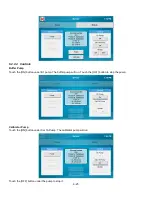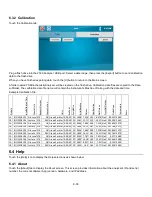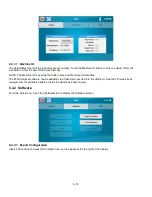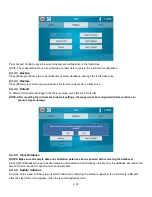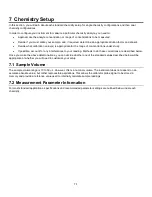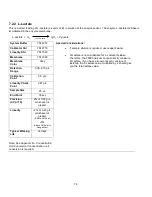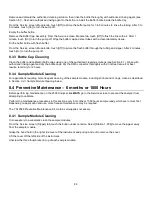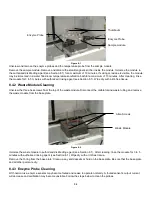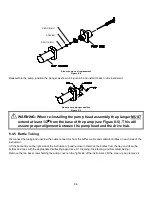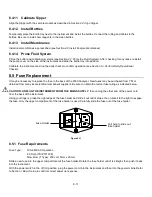
7-1
7 Chemistry Setup
In this section, you will learn about each standard chemistry setup for single chemistry configurations and then dual
chemistry configurations.
In order to configure your instrument to measure a particular chemistry analyte, you need to:
•
Approximate the analyte concentration or range of concentrations to be measured.
•
Decide if you must dilute your sample, and, if required, determine an appropriate dilution factor and diluent.
•
Decide what calibration value(s) is appropriate for the range of concentrations under study.
•
If possible, account for any interferences to your reading. Methods to do these corrections are described below.
Once you make the above determinations, you can decide whether one of the standard setups described below will be
appropriate or whether you will need to customize your setup.
Sample Volume
7.1
The sample volume range is 10 to 50
µ
L. However, this is a nominal volume. The instrument does not depend on an
accurate absolute value, but rather reproducible aspirations. This allows the calibrator probe signal to be stored in
memory and provide a reference value used to internally calculate sample readings.
Measurement Parameter Information
7.2
For most standard applications, specifications and recommended parameter settings are outlined below under each
chemistry.
Summary of Contents for YSI 2500
Page 1: ...USER MANUAL 525021 YSI 2500 Biochemistry Analyzer OPERATIONS AND MAINTENANCE MANUAL...
Page 34: ...5 11 8 The Stat sample results are displayed on the Run Stat tab Stat sample results...
Page 88: ...13 1 13 Notices Declaration of Conformity 13 1...
Page 96: ...17 1 17 Appendix D Line Power Cord and Plug Wiring United Kingdom United States Europe...




